 | TODAY IN SCIENCE HISTORY
NEWSLETTER - 19 MAY |
 On 19 May 1906, the Simplon Tunnel was opened. At the time, being 12 miles in length, it was the world's longest railway tunnel, cutting under the Alps between Italy and Switzerland and providing an important trade route. On 19 May 1906, the Simplon Tunnel was opened. At the time, being 12 miles in length, it was the world's longest railway tunnel, cutting under the Alps between Italy and Switzerland and providing an important trade route.
What construction methods were available for such an ambitious project started at the end of the eighteenth century, and what difficulties had to be overcome? A contemporary account is given in How it is Done: or, Victories of the Engineer (1908).
|
 On 19 May 1914, Max Ferdinand Perutz was born the Nobel Proze-winning austrian-British biochemist who used X-ray diffraction analysis to determine the structure of haemoglobin, the protein that transports oxygen from the lungs to the tissues via blood cells. Today's Science Store pick is: Science Is Not a Quiet Life: Unravelling the Atomic Mechanism of Haemoglobin, by Max F. Perutz (ed.). In a collection of papers he authored and co-authored, he shows how X-ray crystallography was used to determine haemoglobin's complex atomic structure and to unravel the stereochemical mechanisms of its respiratory functions. It introduces isomorphous replacement with heavy atoms which led to the first protein structures and haemoglobin. New Price $47.00. Also available Used from $21.50 (as of time of writing). On 19 May 1914, Max Ferdinand Perutz was born the Nobel Proze-winning austrian-British biochemist who used X-ray diffraction analysis to determine the structure of haemoglobin, the protein that transports oxygen from the lungs to the tissues via blood cells. Today's Science Store pick is: Science Is Not a Quiet Life: Unravelling the Atomic Mechanism of Haemoglobin, by Max F. Perutz (ed.). In a collection of papers he authored and co-authored, he shows how X-ray crystallography was used to determine haemoglobin's complex atomic structure and to unravel the stereochemical mechanisms of its respiratory functions. It introduces isomorphous replacement with heavy atoms which led to the first protein structures and haemoglobin. New Price $47.00. Also available Used from $21.50 (as of time of writing).
Other picks:
I Wish I'd Made You Angry Earlier: Essays on Science, Scientists, and Humanity, by Max F. Perutz, in which he presents a collection of science essays with something for everyone, with warmth, wit, style, and not a dull sentence.
Max Perutz and the Secret of Life, by Georgina Ferry, who gives a biography of an admirable man and his exceptional life, with a rich coverage of the birth of molecular biology and the circumstances that made it possible.
Yesterday's pick: From the Periodic Table to Production: The Life of Thomas Midgley, Jr., by Thomas Midgley
For picks from earlier newsletters, see the Today in Science Science Store home page. | |
 | "There is not a soul on Earth who can read the deluge of physics publications in its entirety. As a result, it is sad but true that physics has irretrievably fallen apart from a cohesive to a fragmented discipline. ... It was not that long ago that people were complaining about two cultures. If we only had it that good. today." - Abraham Pais, Dutch-American physicist and science historian (born 19 May 1918)  |
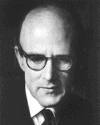 | "A discovery is like falling in love and reaching the top of a mountain after a hard climb all in one, an ecstasy not induced by drugs but by the revelation of a face of nature that no one has seen before and that often turns out to be more subtle and wonderful than anyone had imagined."
- Max Ferdinand Perutz, Austrian-British biochemist (born 19 May 1914)  |
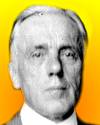
| "At bottom each 'exact' science is, and must be speculative, and its chief tool of research, too rarely used with both courage and judgement, is the regulated imagination."
- Reginald Aldworth Daly, Canadian-American geologist (born 19 May 1871)  |
| Before you look at today's web page, see if you can answer some of these questions about the events that happened on this day. Some of the names are very familiar. Others will likely stump you. Tickle your curiosity with these questions, then check your answers on today's web page. |

|  Max Ferdinand Perutz, born 19 May 1914, is an Austrian-born British biochemist, corecipient of the 1962 Nobel Prize for Chemistry for his X-ray diffraction analysis of the structure of the protein that transports oxygen from the lungs to the tissues via blood cells. He that it is constructed of four protein chains wound together, and that the molecule changes shape when oxygen is added. Perutz was also interested in studying glaciers, making measurements which were the first to show different rates of flow in different parts of the same glacier. Max Ferdinand Perutz, born 19 May 1914, is an Austrian-born British biochemist, corecipient of the 1962 Nobel Prize for Chemistry for his X-ray diffraction analysis of the structure of the protein that transports oxygen from the lungs to the tissues via blood cells. He that it is constructed of four protein chains wound together, and that the molecule changes shape when oxygen is added. Perutz was also interested in studying glaciers, making measurements which were the first to show different rates of flow in different parts of the same glacier.
 What is the name of the blood protein he analyzed? What is the name of the blood protein he analyzed? |
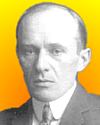 |  Carl E. Akeley, born 19 May 1864, was an American naturalist and explorer who developed a certain method for museum display of animals. He also invented the Akeley camera which was used to capture the first movies of gorillas. Carl E. Akeley, born 19 May 1864, was an American naturalist and explorer who developed a certain method for museum display of animals. He also invented the Akeley camera which was used to capture the first movies of gorillas.
 What was his display method? What was his display method? |
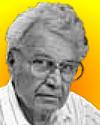
|  Robert S. Dietz (1914-1995) was an American geophysicist and oceanographer who set forth a theory in 1961 of a process in which new crustal material continually upwells from the Earth's depths and spreads outward at a rate of several inches per year. Robert S. Dietz (1914-1995) was an American geophysicist and oceanographer who set forth a theory in 1961 of a process in which new crustal material continually upwells from the Earth's depths and spreads outward at a rate of several inches per year.
 Where does this process take place? Where does this process take place? |

|  This British archaeological scholar (1888-1935) was also a military strategist and author best known for his legendary war activities in the Middle East during World War I . This British archaeological scholar (1888-1935) was also a military strategist and author best known for his legendary war activities in the Middle East during World War I .
 Can you name this man, or give his nickname? Can you name this man, or give his nickname? |
|  On 19 May 1987, a patent was issued to Chet Fleming (U.S. No. 4,666,425) for keeping something alive. On 19 May 1987, a patent was issued to Chet Fleming (U.S. No. 4,666,425) for keeping something alive.
 The patent was for a process to keep what alive? |

|  On 19 May 1910, the Earth passed through the tail of a comet. This remains the most intimate contact between the Earth and any comet in recorded history. On 19 May 1910, the Earth passed through the tail of a comet. This remains the most intimate contact between the Earth and any comet in recorded history.
 What is the name of this comet? |
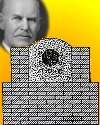
|  On 19 May 1896, Edward Acheson was issued a patent for an electric furnace used to produce one of the hardest industrial substances. On 19 May 1896, Edward Acheson was issued a patent for an electric furnace used to produce one of the hardest industrial substances.
 What substance was covered by this patent? |
When you have your answers ready to all the questions above, you'll find all the information to check them, and more, on the May 19 web page of Today in Science History. Or, try this link first for just the brief answers.
Fast answers for the previous newsletter for May 18: pituitary; tetraethyl lead, an antiknock additive; French military surgeon Mount St. Helens; the decade including the year 1914; into space - in a Soyuz spacecraft.
|
 If you enjoy this newsletter, the website, or wish to offer encouragement or ideas, please send feedback by using your mail reader Reply button. If you enjoy this newsletter, the website, or wish to offer encouragement or ideas, please send feedback by using your mail reader Reply button. |
--
If you do not want to receive any more newsletters,
Unsubscribe To update your preferences and to unsubscribe visit
this link 


 On 19 May 1906, the Simplon Tunnel was opened. At the time, being 12 miles in length, it was the world's longest railway tunnel, cutting under the Alps between Italy and Switzerland and providing an important trade route.
On 19 May 1906, the Simplon Tunnel was opened. At the time, being 12 miles in length, it was the world's longest railway tunnel, cutting under the Alps between Italy and Switzerland and providing an important trade route.



 Max Ferdinand Perutz, born 19 May 1914, is an Austrian-born British biochemist, corecipient of the 1962 Nobel Prize for Chemistry for his X-ray diffraction analysis of the structure of the protein that transports oxygen from the lungs to the tissues via blood cells. He that it is constructed of four protein chains wound together, and that the molecule changes shape when oxygen is added. Perutz was also interested in studying glaciers, making measurements which were the first to show different rates of flow in different parts of the same glacier.
Max Ferdinand Perutz, born 19 May 1914, is an Austrian-born British biochemist, corecipient of the 1962 Nobel Prize for Chemistry for his X-ray diffraction analysis of the structure of the protein that transports oxygen from the lungs to the tissues via blood cells. He that it is constructed of four protein chains wound together, and that the molecule changes shape when oxygen is added. Perutz was also interested in studying glaciers, making measurements which were the first to show different rates of flow in different parts of the same glacier. What is the name of the blood protein he analyzed?
What is the name of the blood protein he analyzed?
 Carl E. Akeley, born 19 May 1864, was an American naturalist and explorer who developed a certain method for museum display of animals. He also invented the Akeley camera which was used to capture the first movies of gorillas.
Carl E. Akeley, born 19 May 1864, was an American naturalist and explorer who developed a certain method for museum display of animals. He also invented the Akeley camera which was used to capture the first movies of gorillas. What was his display method?
What was his display method?
 Robert S. Dietz (1914-1995) was an American geophysicist and oceanographer who set forth a theory in 1961 of a process in which new crustal material continually upwells from the Earth's depths and spreads outward at a rate of several inches per year.
Robert S. Dietz (1914-1995) was an American geophysicist and oceanographer who set forth a theory in 1961 of a process in which new crustal material continually upwells from the Earth's depths and spreads outward at a rate of several inches per year. Where does this process take place?
Where does this process take place? 
 This British archaeological scholar (1888-1935) was also a military strategist and author best known for his legendary war activities in the Middle East during World War I .
This British archaeological scholar (1888-1935) was also a military strategist and author best known for his legendary war activities in the Middle East during World War I . Can you name this man, or give his nickname?
Can you name this man, or give his nickname?  On 19 May 1987, a patent was issued to Chet Fleming (U.S. No. 4,666,425) for keeping something alive.
On 19 May 1987, a patent was issued to Chet Fleming (U.S. No. 4,666,425) for keeping something alive. The patent was for a process to keep what alive?
The patent was for a process to keep what alive?
 On 19 May 1910, the Earth passed through the tail of a comet. This remains the most intimate contact between the Earth and any comet in recorded history.
On 19 May 1910, the Earth passed through the tail of a comet. This remains the most intimate contact between the Earth and any comet in recorded history. What is the name of this comet?
What is the name of this comet?
 On 19 May 1896, Edward Acheson was issued a patent for an electric furnace used to produce one of the hardest industrial substances.
On 19 May 1896, Edward Acheson was issued a patent for an electric furnace used to produce one of the hardest industrial substances. What substance was covered by this patent?
What substance was covered by this patent? If you enjoy this newsletter, the website, or wish to offer encouragement or ideas, please send feedback by using your mail reader Reply button.
If you enjoy this newsletter, the website, or wish to offer encouragement or ideas, please send feedback by using your mail reader Reply button. 

Δεν υπάρχουν σχόλια:
Δημοσίευση σχολίου